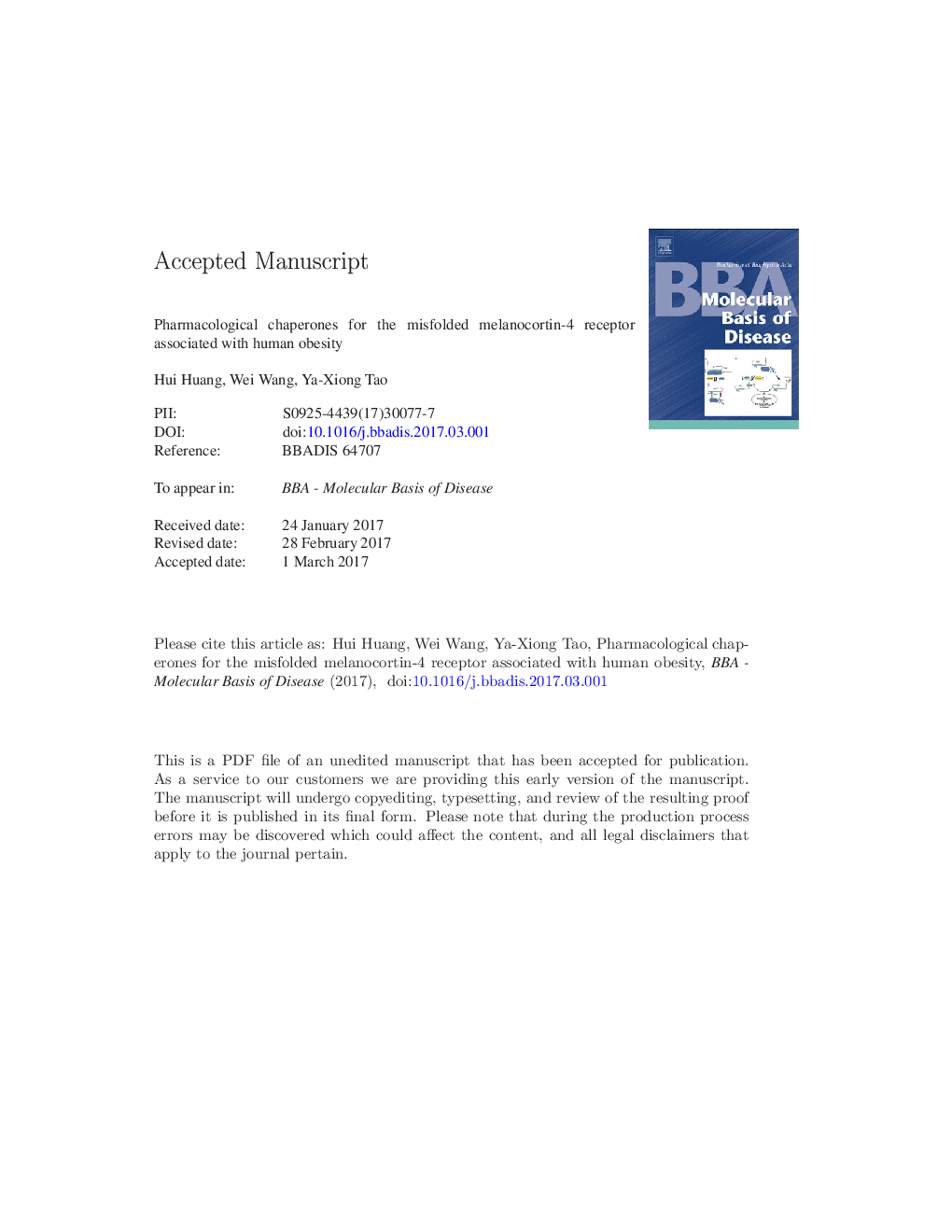| Article ID | Journal | Published Year | Pages | File Type |
|---|---|---|---|---|
| 5501079 | Biochimica et Biophysica Acta (BBA) - Molecular Basis of Disease | 2017 | 65 Pages |
Abstract
The melanocortin-4 receptor (MC4R) plays a vital role in regulating energy homeostasis. Mutations in the MC4R cause early-onset severe obesity. The majority of loss of function MC4R mutants are retained intracellularly, many of which are not terminally misfolded and can be stabilized and targeted to the plasma membrane by different chaperones. Some of the mutants might be functional once coaxed to the cell surface. Molecular chaperones and chemical chaperones correct the misfolding of some mutant MC4Rs. However, their therapeutic application is very limited due to their non-specific mechanism of action and, for chemical chaperone, high dosage needed to be effective. Several pharmacological chaperones have been identified for the MC4R and Ipsen 5i and Ipsen 17 are the most potent and efficacious. Here we provide a comprehensive review on how different approaches have been applied to rescue misfolded MC4R mutants. This article is part of a Special Issue entitled: Melanocortin Receptors - edited by Ya-Xiong Tao.
Keywords
MC4RMRAPV2RMSH4-phenyl butyric acidGnRHRPBANDICFTRGPCRHspAgRPHsc70Nephrogenic diabetes insipiduscystic fibrosis transmembrane conductance regulatorendoplasmic reticulumMelanocyte-stimulating hormoneHeat shock proteinagouti-related peptideMelanocortin-4 receptorgonadotropin-releasing hormone receptorVasopressin V2 receptorG protein-coupled receptor
Related Topics
Life Sciences
Biochemistry, Genetics and Molecular Biology
Ageing
Authors
Hui Huang, Wei Wang, Ya-Xiong Tao,
